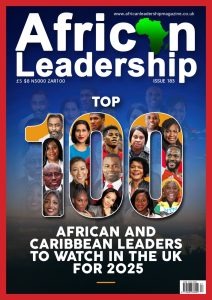The continent contributes over 20% of the world’s gold production, with countries like South Africa, Ghana, and Tanzania at the forefront. In the diamond industry, the Democratic Republic of Congo (DRC), Botswana, and Angola play crucial roles.
Moreover, Zambia and the DRC are major copper producers, supporting global supply chains. Furthermore, the DRC leads in cobalt production, a vital component in electric vehicle batteries and renewable energy technologies.
West Africa is a significant gold-producing region, accounting for around 25% of Africa’s total gold production, according to the US Geological Survey (USGS) as of 2023. Ghana is the leading producer, followed by Mali and Burkina Faso. Ghana’s gold production reached approximately 4.2 million ounces in 2023, making it a substantial contributor to the global gold market.
Central Africa plays a crucial role in the cobalt market, with the Democratic Republic of the Congo (DRC) holding over 60% of global cobalt reserves. The DRC produced around 130,000 metric tonnes of cobalt in 2023, making it the largest producer worldwide. Recent reforms in the DRC’s Mining Code aim to improve transparency and attract investment.
Southern Africa is also a significant mining hub, with South Africa being a major player in platinum group metals (PGMs) and diamonds. In 2023, South Africa produced approximately 4.5 million ounces of platinum, according to the South African Chamber of Mines. Botswana is another key player in diamond mining, with the industry contributing around 10% to its GDP.
Namibia’s mining sector, particularly uranium and diamonds, continues to attract investment and play a vital role in the country’s economy.
East Africa is an emerging mining destination, with Tanzania and Kenya making significant contributions to the industry. Tanzania’s gold reserves are substantial, with the country producing approximately 1.2 million ounces of gold in 2023. Kenya has also gained attention for its discovery of rare earth elements, including over 12 million tonnes of deposits in the Kilifi region in 2023. The African Mining Vision (AMV) identifies East Africa as a region with untapped potential, highlighting its vast mineral riches and opportunities for growth and development.
Nigeria’s mining sector, although smaller in scale, has vast potential for job creation. Currently, the sector directly employs around 100,000 people and supports many more indirectly. With ongoing reforms and investments, this number is expected to increase, providing the much-needed employment opportunities across various regions of the country.
Investment Drivers
Favourable mining policies have been implemented in many African countries to attract investment. For instance, Ghana’s Minerals and Mining Act 2006 offers tax incentives and favourable royalty rates, such as a royalty rate of 3-6% for gold, depending on the price, as set by the Ghana Minerals Commission.
Investments in infrastructure, such as roads, railways, and ports, are enhancing access to mining sites and reducing operational costs for mining companies. Notable projects include the LAPSSET Corridor in Kenya, a major initiative aimed at improving connectivity and reducing costs.
Technological advancements are also driving efficiency in the mining sector. The adoption of automation and data analytics is increasing in mining operations, with the potential to boost productivity by up to 20%, according to the McKinsey Global Institute.
The global demand for minerals is expanding, particularly for those used in green technologies. The International Energy Agency (IEA) projects that demand for cobalt could increase by up to 200% by 2030 due to its use in electric vehicle batteries, highlighting the growing importance of sustainable mining practices in Africa.
Investment Opportunities
Collaborating with local mining companies through joint ventures can be beneficial, as it provides access to existing infrastructure and local expertise. For instance, Barrick Gold’s partnership with Africa’s Randgold Resources in Mali has led to successful operations and enhanced local engagement.
Exploring and developing new projects can also yield high returns. The discovery of substantial rare earth deposits in Kenya’s Kilifi region in 2023 has attracted significant investment interest, highlighting the potential for growth in this area.
READ ALSO: African Mining: Women’s Role in the Future
Investing in mining technology and services can be a lucrative opportunity, with the market projected to grow at an annual rate of 8% through 2027, according to MarketsandMarkets.
The International Council on Mining and Metals (ICMM) reports that sustainable practices can improve operational efficiency and enhance community relations, making it a worthwhile investment for mining companies operating in Africa.
Nelson Mandela emphasises the need for Africa’s mineral wealth to benefit its people, not exploit them, highlighting the importance of inclusive economic growth. Ellen Johnson Sirleaf echoed this sentiment, urging African countries to leverage their mining resources for sustainable development and long-term prosperity.




